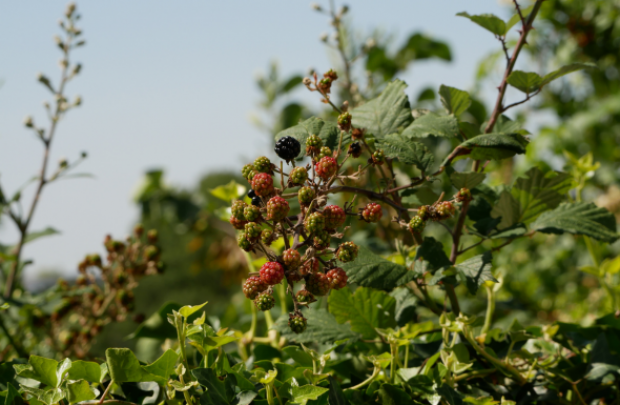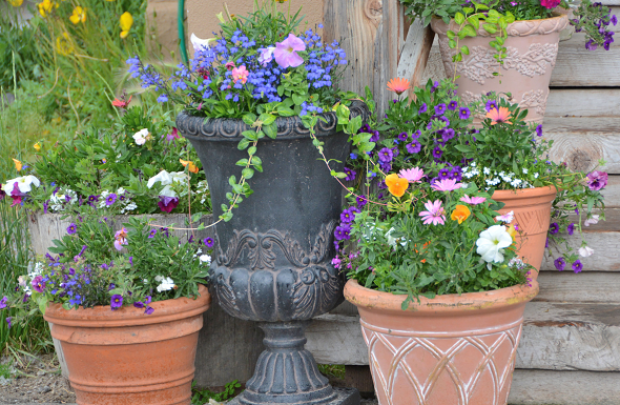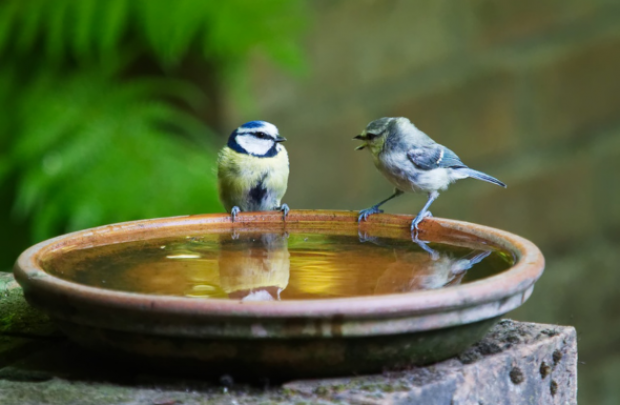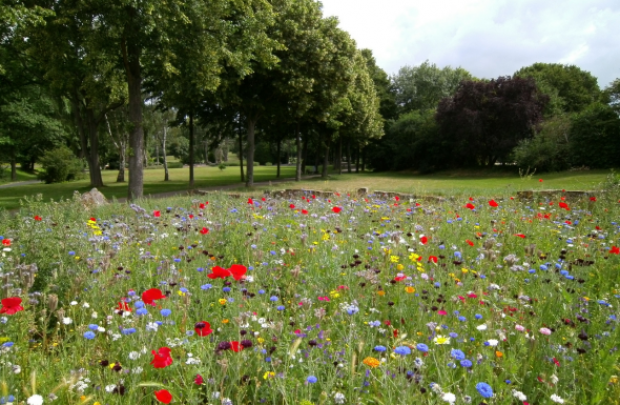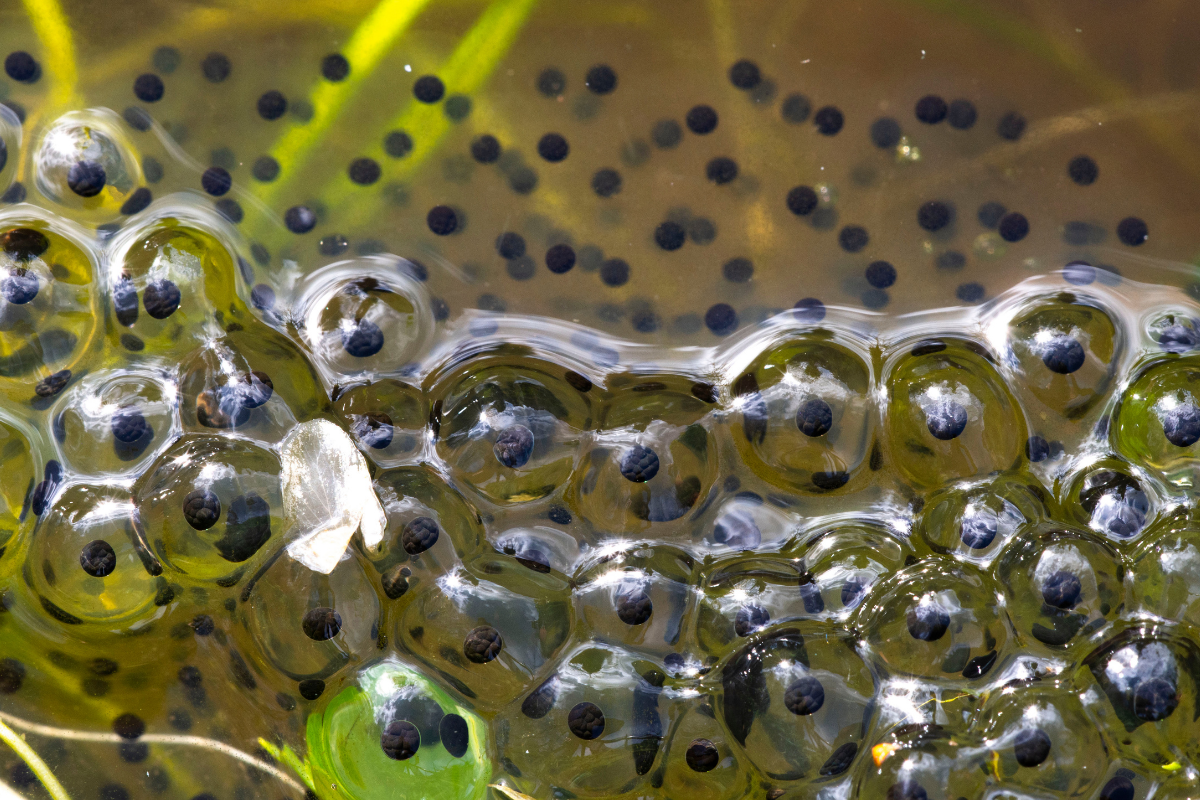
How to attract frogs
by Alex Acott, Naturehood community member
If you want to attract any species, you will need to provide a reason for them to visit. If you can fulfil their ecological needs by providing a place to hide, breed and eat you stand to have the best chance of encouraging them to your Naturespace.
As it is spring, many species are just waking up from hibernation and the thing I look forward to most is hearing the chorus of breeding frogs in my pond and the accompanying clumps of spawn. I just love observing the tadpoles grow through every step of their journey to adulthood!
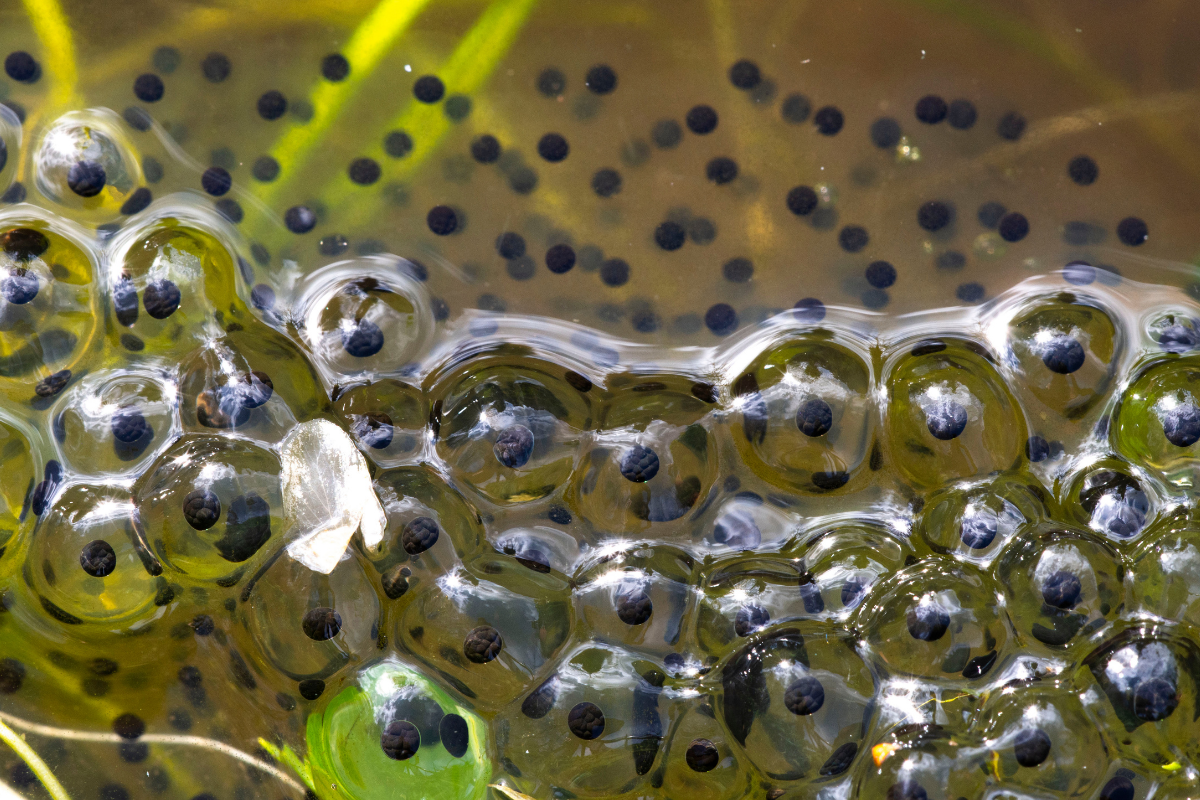
Unfortunately, common frogs are declining in the UK. According to a garden survey from the RSPB, their numbers have fallen by 17% in gardens between 2014 and 2018. Part of the reason for this is the loss of ponds. Ideally, every garden should have at least one pond and it is easy to see why - even a small body of water is going to increase your biodiversity and allow amphibians to keep cool and moist in the summer.
For frogs to breed in your pond, ideally it will need to be at least 2m x 2m with different levels and gradients – the deepest point being around 60cm. This is to maximise species diversity and to reduce competition, as many organisms specialise in certain environments and temperatures. This will also cater to all stages of your frog’s lifecycle. For instance, my frogs always pick the same area in which to lay their spawn - the shallow 20cm shelf. This is the warmest area of the pond that is exposed to the most sunshine, which will hasten the tadpole’s development. It does not slope, so the spawn remains in one place. This area is also the most exposed to predators, so frogs and tadpoles appreciate deeper areas in which to hide and escape.
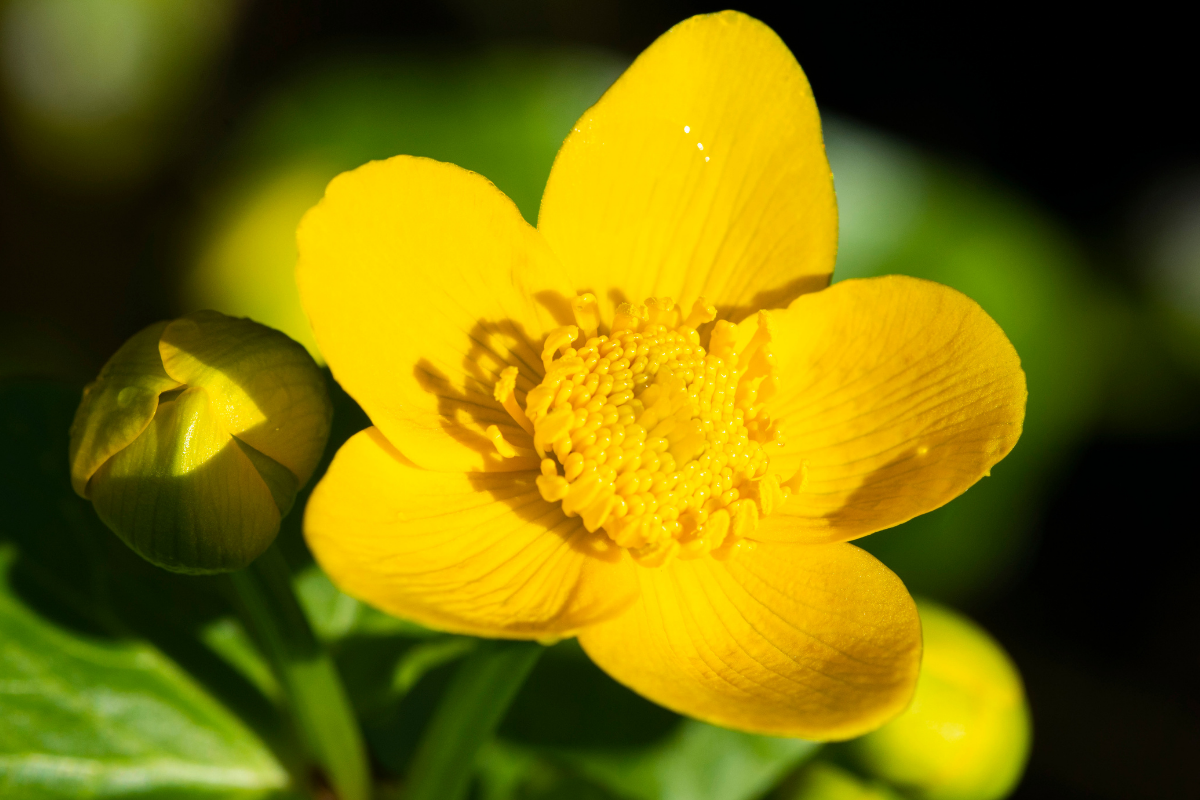
It’s a dangerous existence being a common frog tadpole, with only around 5 out of 2000 on average making it to adulthood. Chances are, you will have other predators in your pond such as water beetles, newts and dragonfly nymphs which would love a tasty tadpole. Birds such as carrion crows will pluck them from the edge of the pond. Tadpoles will even eat each other if food is scarce and competition is fierce. A good variety of native plants that prefer different areas and depths of the pond will help provide cover from predators for the emerging tadpoles wherever they go. Here are some suggested plants:
Submerged plants
These are probably the most important as they oxygenate the water, which is obviously going to benefit all the life in your pond. They also shade areas of the pond which makes it cooler and they absorb excess nutrients – mainly nitrogen and phosphorus. This stops algae from exploiting this fertiliser (with no competition, the algae will propagate and turn the water green!)
- Rigid hornwort (Ceratophyllum denersum)
- Water Violet (Hottonia palustris)
- Spiked Water Milfoil (Myriophyllum spicatum)
Creeping plants
These tend to grow from the water’s edge and creep over the surface of the pond. A favourite egg laying site for newts. They have long flowering seasons making them excellent for pollinating insects.
- Brook Lyme (Veronica beccabunga)
- Water forget-me-not (Myosotis scorpiodes)
Floating plants
These float to the surface, either as the whole plant or just the leaves and flowers in order to soak up the sun. These can occupy the space in the middle of the pond and provide great egg laying opportunities for flying insects such as dragonflies.
- Water Soldier (Stratiotes aloides)
- Frogbit (Hydrocharis morsus-ranae)
- White Water Lily (Nymphaea alba)
Marginal plants
These will grow in shallow water or on the bank where it is moist providing a safe access point under cover for frogs and other amphibians to enter and leave the pond. When tadpoles first hatch, they stick near the shallows to warm up and speed up their growth. They are thankful for the shelter that marginal plants provide, otherwise they would be an easier target. They also make fantastic places for emerging insects such as dragonfly nymphs to climb out of the water in order to develop into adults.
- Yellow Flag Iris (Iris pseudacorus)
- Water Mint (Mentha aquatica)
- Marsh Marigold (Caltha palustris)
One thing to be careful of is having more than one species of plant competing for the same area. One will usually dominate without careful management. For instance, my pond used to have white water lilies and water soldier, which occupies the same space but in a different way. The advantage that water soldiers have is that they have a budding system where it can produce asexually, and this allows it to spread more quickly than the lily can. As it has a free floating root system, it is really easy to remove and control. But when you don’t control it, it quickly takes up most of the space on the surface. This happened to me, and consequently my white water lilies died out. Both can coexist, but you need to ensure there is a balance.
Your plants will try to squeeze into every available space, which eventually covers the whole pond. Once, my water forget-me-nots formed a dense mat and crept all the way to the centre of the pond. I kept it as it produced a lot of flowers and that brought in a teeming abundance of pollinating insects. However, it completely blocked the light and the submerged plants underneath consequently died. The pond became too cold, it lacked oxygen and a decomposing sludge began to form. My pond life really suffered for it and I did not see any froglets that year. It is important to remove vegetation regularly to prevent this from happening. You should aim for between 50-75% of plant coverage in your pond.
When clearing pond plants, my trick is to get a deep white tray filled with some pond water to put the plants into. Then you can sift through it and when done, put the plants into a second white tray. This should leave a multitude of pond creatures in the original tray for you to release back into the pond. I repeat this several times until I no longer see any pond creatures. An alternative method to save time is just to leave the plants on the edge of the pond to give the creatures an opportunity to get back into the pond. I just prefer my method as you really get to see what’s in your pond! There are so many hidden wonders that you rarely get to see otherwise!
It’s no less dangerous when they eventually turn into tiny froglets and leave the pond. If the pond is surrounded by a closely cut lawn, they are out in the open and offer easy pickings to passing predators. I set my pond out in the sun in order for the plants to properly photosynthesize, but it is close to areas of shadow. Froglets gravitate to these areas as the UV radiation from the sun can quickly kill amphibians if exposed for too long. Let the lawn grow long in these areas, and especially don’t mow during this time as you risk cutting down the froglets!
I have an opening in the fence which leads out into a large allotment which I imagine the frogs use unless they are able to squeeze through other areas. The amphibians will require a corridor that has been left to grow in order to provide safe passage for when they make the journey from the pond to the exit.
Frogs spend much of their time out on land outside of the breeding season. They are nocturnal and consume invertebrates such as insects, molluscs and worms. If you can cater to these prey items, frogs are more likely to spend more time in your garden.
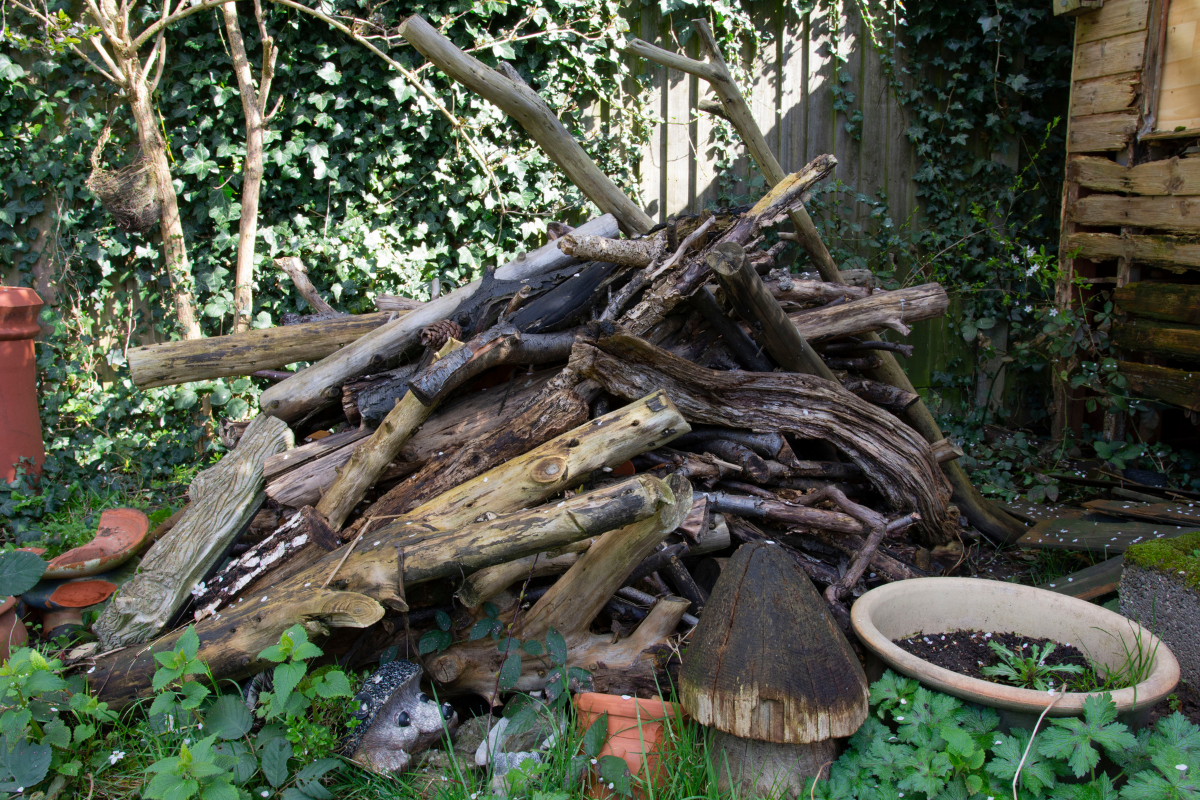
Many of these invertebrates such as molluscs have similar requirements to frogs, as they too prefer damp places and shade. Lots of them use my wood pile, and they often congregate under my upside down flower pots (with a hole in the top so they can get in and out). Dead wood is a key part to any healthy ecosystem as it supports so many organisms – particularly decomposers such as woodlice and beetle larvae. I will definitely encourage putting in a wood pile for not only this reason, but frogs will use these piles to hide and even hibernate.
Frogs are ectothermic, which means that they get their heat from the surrounding environment. They are sluggish during the cold, so are forced to hibernate during winter. They need somewhere that is warmer than the outside so that they don’t freeze, and moist enough so that their skin does not dry out. Compost piles are perfect for this. Some male frogs even hibernate at the bottom of the pond under the sediment. If the pond freezes over for long periods, the frogs may run out of oxygen despite being capable of breathing under water. Don’t smash the ice, as the disturbance could wake the frogs early, which wastes precious energy. Leaving something that floats on the surface of the pond such as a football will cause a gentle ripple effect, and that constant movement will make it less likely to freeze. This also has the added benefit of allowing other animals opportunities to drink.
Implementing all this doesn’t necessarily bring in frogs. I’m lucky to live by a large allotment that contains ponds. Those that live in a more urban environment may not have frogs in the area and they don’t tend to travel far.
The presence of cats can also be problematic. Based on a study in 1997, the UK population of 9 million cats would have killed approximately 5 million amphibians and reptiles between April and August that year. The UK cat population has since increased to 10.9 million, so the number of deaths will be even greater.
If more people in your neighbourhood created ponds in their garden, and provided a way to link these habitats together, then frogs are more likely to find them. If there are lots of cats in the area, set out cat deterrents and try to convince the owners to find ways of reducing their predation rates. Bringing the wider community together to protect and enhance natural spaces is the whole idea of Naturehood, and we have lots of suggestions on how to get your community involved. Find your Naturehood or start your own to see how!
